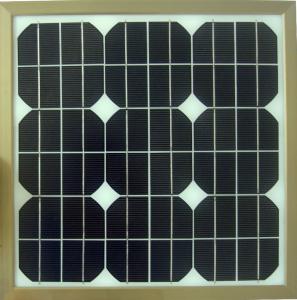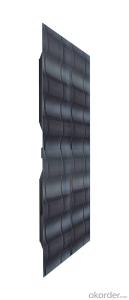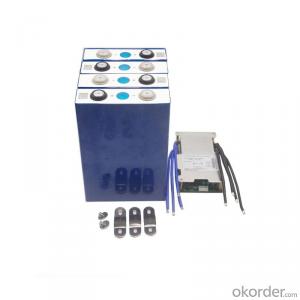Loading Port:China main port
Payment Terms:TT or LC
Min Order Qty:10000 watt
Supply Capability:10000000 watt/month
1. Structure of Monocrystalline Solar Cell for Solar PV Panel Description
A solar cell, or photovoltaic cell, is an electrical device that converts the energy of light directly into electricity by the photovoltaic effect,
which is a physical and chemical phenomenon. It is a form of photoelectric cell, defined as a device whose electrical characteristics, such
as current, voltage, or resistance, vary when exposed to light. Solar cells are the building blocks of photovoltaic modules, otherwise known
as solar panels.
2. Main Features of the Monocrystalline Solar Cell for Solar PV Panel
• High module conversion efficiency, through superior manufacturing technology
• 0 to +5W positive tolerance for mainstream products
• Certified to withstand high wind loads and snow loads
• Anodized aluminum is mainly for improving corrosion resistance
• Anti-reflective, Highly transparent, low iron tempered glass
• Excellent performance under low light environment
3. Monocrystalline Solar Cell for Solar PV Panel Images


4. Monocrystalline Solar Cell for Solar PV Panel Specification
窗体顶端 Solar Cell 窗体底端 | Mono-crystalline silicon 125 × 125 mm ( 5 inches ) |
No. of Cells | 72 (6× 12) |
Dimensions | 1580 × 808 × 35mm |
Weight | 15.5 kgs |
Front | Glass 3.2 mm tempered glass |
Frame | Anodized aluminium alloy |
Junction Box | IP67 / IP65 rated (3 bypass diodes) |
Output Cables | TUV (2Pfg1169:2007), UL 4703, UL4703 ,4.0 mm2, symmetrical lengths |
(-) 900mm and (+) 900 mm | |
Connectors | MC4 compatible |
Mechanical load test | 5400Pa |
Resistance | 277g steel ball falls down from 1m height and 60m/s wind |
窗体顶端 Temperature Characteristics 窗体底端 | |
Nominal Operating Cell Temperature (NOCT) | 45±2°C |
Temperature Coefficient of Pmax | -0.44 %/°C |
Temperature Coefficient of Voc | -0.33 %/°C |
Temperature Coefficient of Isc | 0.055 %/°C |
5. FAQ of Monocrystalline Solar Cell for Solar PV Panel
Q1. How long can we receive the product after purchase?
A1.In the purchase of product within three working days, We will arrange the factory delivery as soon as possible. The pecific time of
receiving is related to the state and position of customers
Q2. Can we visit your factory?
A2:Surely, I will arrange the trip basing on your business schedule.
Q3:Which payment terms can you accept?
A3:T/T,L/C,Moneygram,Paypal are available for us.
Basic procedure of the working about solar cells
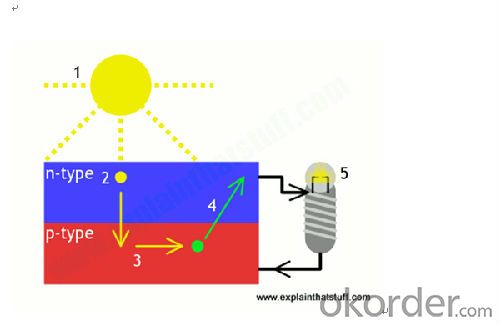
A solar cell is a sandwich of n-type silicon (blue) and p-type silicon (red). It generates electricity by using sunlight to make electrons hop across the junction between the different flavors of silicon:
When sunlight shines on the cell, photons (light particles) bombard the upper surface.
The photons (yellow blobs) carry their energy down through the cell.
The photons give up their energy to electrons (green blobs) in the lower, p-type layer.
The electrons use this energy to jump across the barrier into the upper, n-type layer and escape out into the circuit.
Flowing around the circuit, the electrons make the lamp light up.
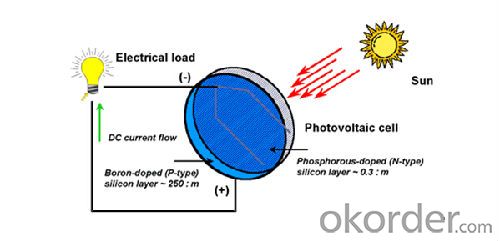
Working of PV cells
A typical silicon PV cell is composed of a thin wafer consisting of an ultra-thin layer of phosphorus-doped (N-type) silicon on top of a thicker layer of boron-doped (P-type) silicon. An electrical field is created near the top surface of the cell where these two materials are in contact, called the P-N junction. When sunlight strikes the surface of a PV cell, this electrical field provides momentum and direction to light-stimulated electrons, resulting in a flow of current when the solar cell is connected to an electrical load


